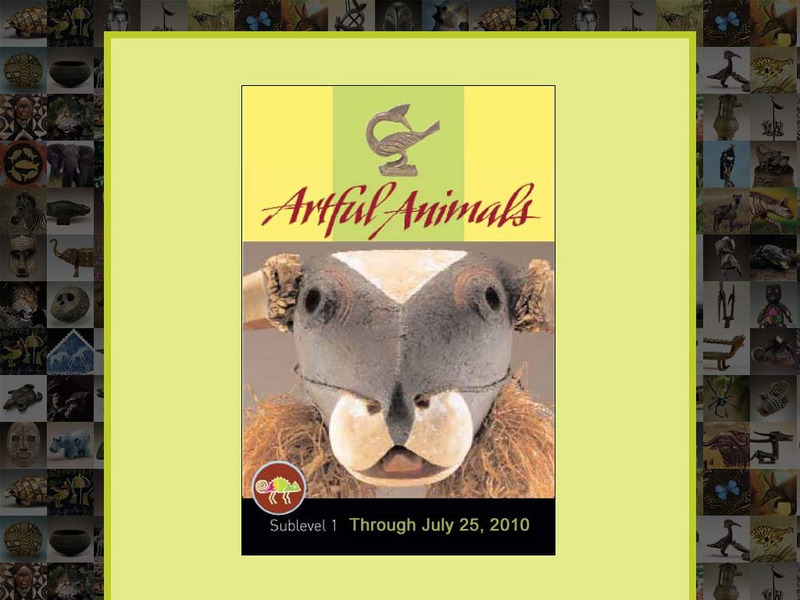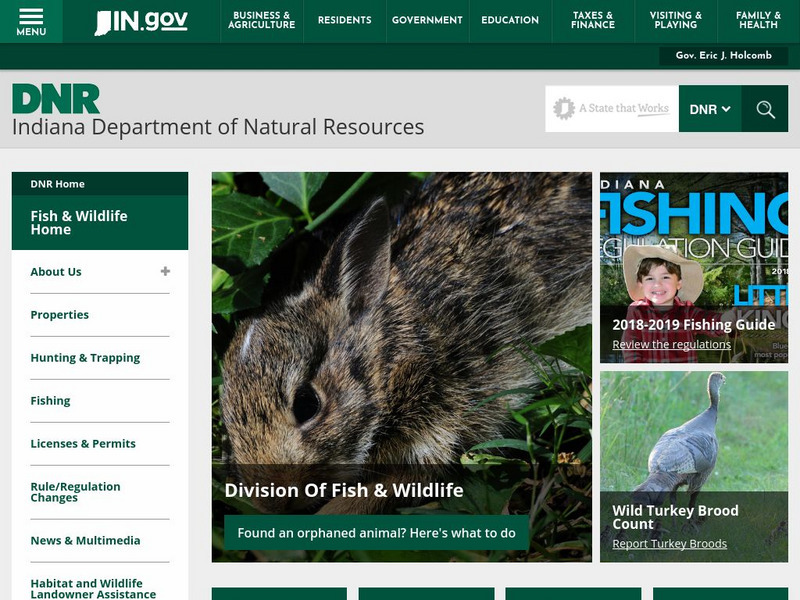American Museum of Natural History
Around with World with DNA
A mammalogist, ornithologist, ichthyologist, and a conservation geneticist share their work and their hopes that their research will help protect and save endangered species and their habitats.
American Museum of Natural History
Bio-Benefits
Kick-start a discussion of the importance of biodiversity with a colorful resource that touts the benefits of maintaining healthy ecosystems. The images stress the interdependence of all the elements of an ecosystem.
American Museum of Natural History
Going, Going...Gone?
Young environmentalists consider how scientists are attempting to save endangered species. They read about what causes extinction and steps to take to minimize the threats.
American Museum of Natural History
They Glow!
Would you believe marine animals can make their own light? An online resource describes the process of bioluminescence and how animals in the ocean use it to survive. The lesson features a catchy tune that describes the behavior of ocean...
American Museum of Natural History
What is Marine Biology?
A marine environment covers the majority of the earth but is arguably the least understood. Teach young scientists about the characteristics of oceans and ocean species using an interactive online lesson. The in-person or remote learning...
American Museum of Natural History
Life in the City
Believe it or not, biodiversity exists even in areas of disturbed habitat. An interactive activity challenges learners to look for species with a magnifying lens in an image of a city habitat. Pop-up images and descriptions explain how...
The National Gallery (UK)
National Gallery, London: Ite: Learning Ideas and Outcomes: Subject Focus
This extensive lesson plan uses the painting 'A View of Het Steen in the Early Morning' as a starting point to learning in science. Students will use the work by Reubens to learn about a variety of animals and their habitats.
PBS
Pbs: Nature: Animals and People: Who's Behaving Badly?
Explore the great variety of animal behaviors by observing them in their natural habitats, and examine the relationship between people, animals and the environment.
Smithsonian Institution
National Museum of African Art: Artful Animals
African artists commonly base their work on animals observed in their natural habitats. Artful Animals lets you view African art that takes animals as its subject and inspiration. Learn about animals as symbols in African art, the beauty...
PBS
Pbs Learning Media: Wild Kratts: All About Lizards Lesson Plan
Students explore the diversity of lizards in terms of characteristics, behavior, and habitat. Activities feature five species of lizards and their special body structures needed for survival.
PBS
Pbs Learning Media: Gila Monster
This video segment from Outdoor Nevada looks at the Gila monster's behavior, habitat, and unique adaptive characteristics. [3:55]
The Wonder of Science
The Wonder of Science: K Ess2 2: Environmental Change
This NSTA vetted source includes resources to teach how plants and animals (including humans) can change the environment to meet their needs. Included are assessment ideas, videos, examples, lesson plans, and photos of student work.
Other
Welcome to Biodiversity Hotspots
Conservation International offers this extensive look at some of earth's most vulnerable areas. Some of the most remarkably diverse places in the world also prove to be some of the most threatened. Learn more about the efforts in place...
Ducksters
Ducksters: Birds for Kids
Kids learn about birds and their habitats and different types. What makes an animal a bird? How do they fly?
Other
Nh F&w: Nongame and Endangered Wildlife Program
New Hampshire offers a problem/solution section of their conservation page that illustrates wildlife management challenges in varied habitats.
Other
Indiana.gov: Indiana State Division of Fish and Wildlife
Home of the State of Indiana's Division of Wildlife. This resource is small, but does offer a photo gallery and some information about the animals that can be found in Indiana. It also gives information about three current restoration...













